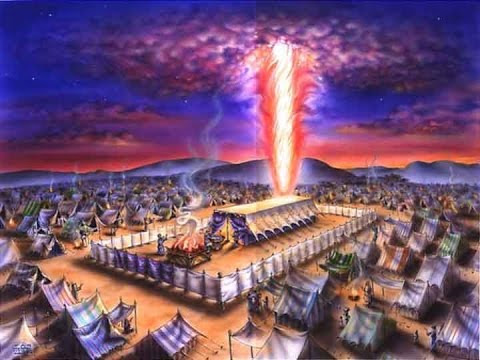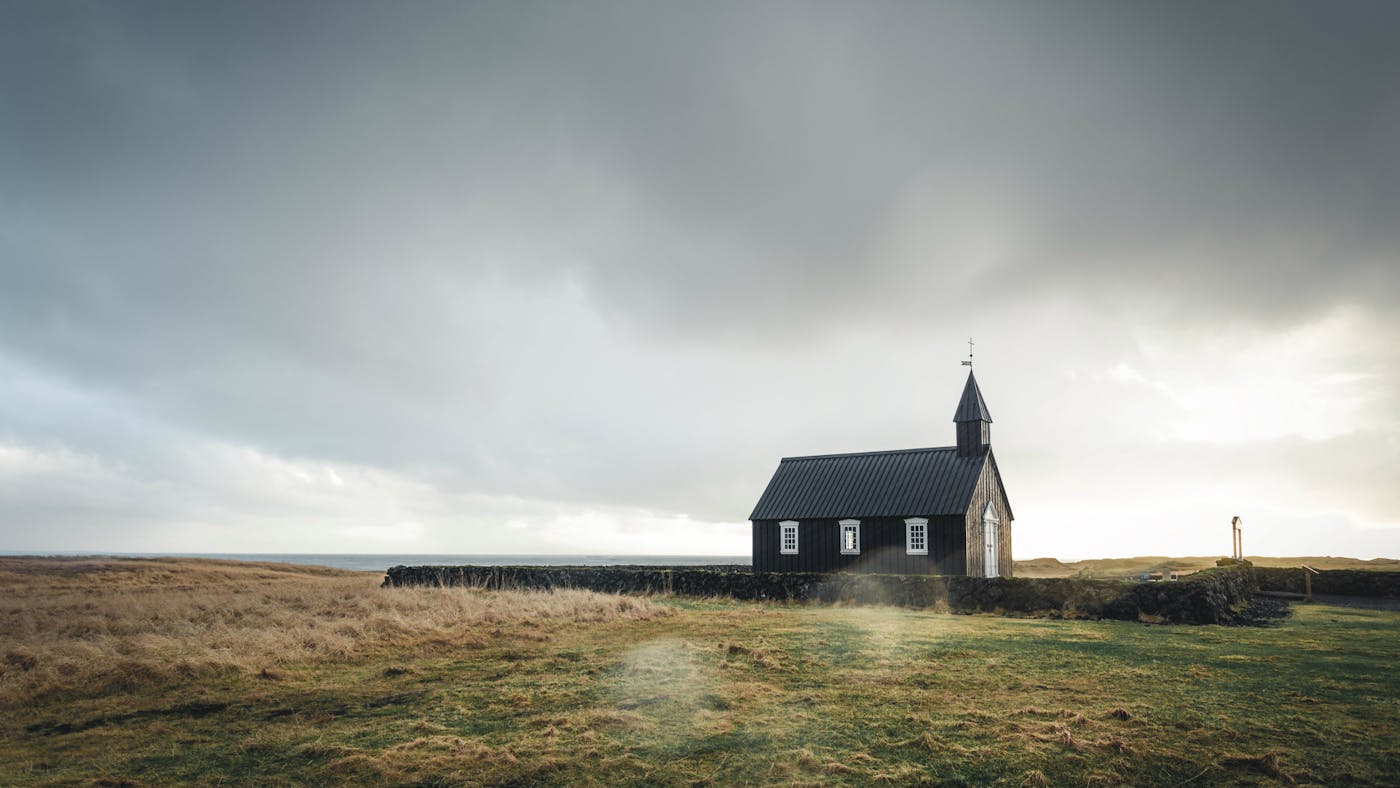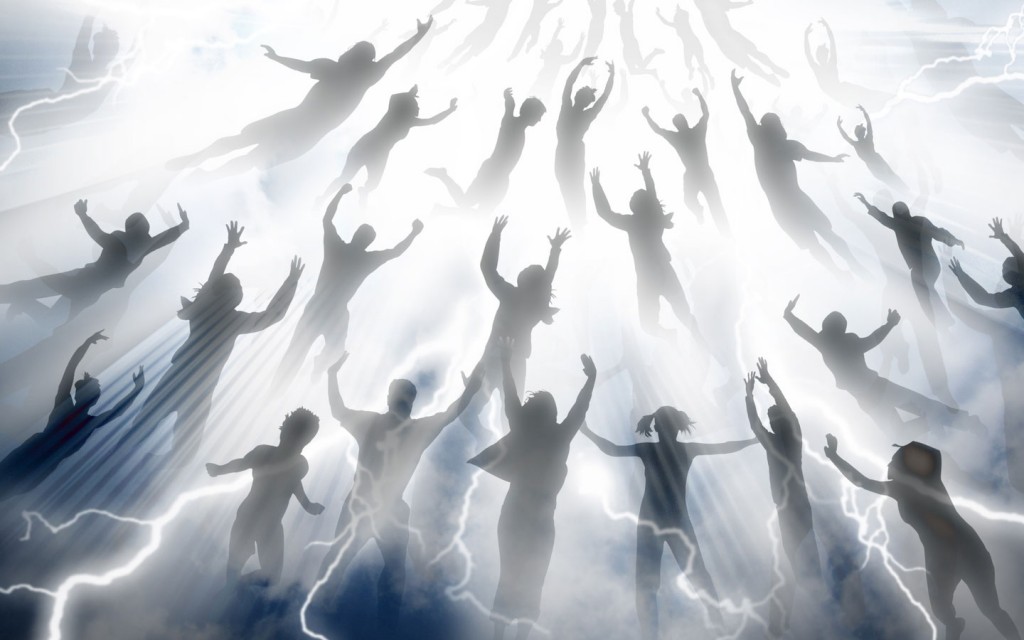
Introduction: Getting ready for the "Big Day"
When Debi and I were getting ready for our “Big Day” (i.e., our wedding day), she had made me 31 paper hearts with individual messages of love and encouragement. I can recall how in the summer before our wedding, she and I wrote daily letters to one another. For us both, the "Big Day" was ever on our minds. We still to this day have that container, with all those hearts. Such memories help me to get a sense of the much greater anticipation Scripture conveys as it directs our attention to what I call "the great marriage theme" of the Bible.

With those thoughts in mind, we turn to Revelation 19:7-9, where we find a vision of celebration of the future “Marriage Supper of the Lamb”. In the last posts, we looked at God's RSVP and how it was He prepared history for the arrival of the Son of God, the intended Bridegroom for the Church He would come to redeem. Revelation 19:7-9 tells us the following vision of the great, future, "Marriage Supper of the Lamb" in the following words:
"Let us rejoice and be glad and give the glory to Him, for the marriage of the Lamb has come and His bride has made herself ready.” 8 It was given to her to clothe herself in fine linen, bright and clean; for the fine linen is the righteous acts of the saints. 9 Then he *said to me, “Write, ‘Blessed are those who are invited to the marriage supper of the Lamb.’” And he said to me, “These are true words of God.”
As we saw in the last couple of posts, this passage presents the Church as complete and perfect, ready for eternity with her Bride-groom, the Lord Jesus Christ. In this post, I want us to once again see how the Church is brought to the point we find here in Revelation 19:7-9, with particular reference to what Jesus is doing in Christians now to get them ready for their "Big Day". From Revelation 19:7-9, we will hop over to John 13 for the remainder of this post, which appropriately we will call: “Getting Ready for the Big Day”.
As we will see again in today's post, you and I have been invited to be part of Jesus’ Bride – the Church, by grace through faith, to what author Sinclair Ferguson speaks of as "the great celebration".
How the marriage theme gets us from Old Testament to New Testament

To review from the last couple of posts, God issued a call to a people to become a nation. He redeemed her out of Egypt and prescribed the Passover celebration to remind her of what He did and to point ahead His intention for her to worship Him (see Exodus 5:1 and Exodus 12). Once Israel was gathered at Mount Sinai, we find God repeated His identity as Her Redeemer. He then revealed the Law or, what the New Testament refers to as the "Old Covenant" to provide a context in which they and Yahweh could relate to one another.
As we often see when studying scripture, God never relates to His creation nor His people apart from such binding agreements or covenants. God, for instance, created all that we see by way of a "binding-agreement" or "covenant of creation", pledging Himself to sustain and bring all He made to His intended purpose (see Jeremiah 33:25). Whenever God dealt with Adam and Eve, He did so by way of a "Covenant of works" (see Genesis 2; Hosea 6:7) and then later a "Covenant of Grace" (see Genesis 3:15, 20-21). Other examples of God's covenant method of dealing with His people include Noah (Genesis 8-9), Abraham (Genesis 12,15,17) and David (2 Samuel 7:13-16); so too when it came to the nation of Israel. After God revealed the Ten Commandments, we then see Moses and the leadership have a feast before God on the slopes of Mount Sinai (see Exodus 24).

What emerges in the retelling of the Exodus is the extraordinary pattern of an ancient Jewish wedding scene, namely, a betrothal feast (in this case, the Passover); followed by the "Groom-to-be" or "Bridegroom" going ahead of the Bride to build a dwelling (God's words about "going to the mountain to celebrate a feast to Him) and then the groom retrieving His bride and marrying her (the scene in Exodus 19-20). It is later in the prophetic books we discover that God envisioned His covenant with Israel as that of the formation of a Husband and wife relationship (see Jeremiah 2:1; Ezekiel 16; Hosea 2). Jeremiah 2:1 specifically likens this historic event to a wedding:
“I remember concerning you the devotion of your youth, The love of your betrothals, Your following after Me in the wilderness, Through a land not sown.”
Tragically, Israel would reject Yahweh and per Isaiah 50:1. He and Israel would metaphorically have a divorce. However, God pledged to restore Israel. When we come to the New Testament, we discover God sent His Son to be the Bridegroom to call forth individual sinners to believe and become part of His church, His bride. Ephesians 5:25 summarizes this point: “Husbands, love your wives, just as Christ also loved the church and gave Himself up for her.”

God, as the Person of the Holy Spirit, is gathering specific sinners from every nation to be part of the Bride of Christ, to get ready for His return and to bring Israel back to Himself (see John 16:7-11). What follows from here will continue on with this wider theological framework of "the great marriage theme" and explore the specifics of Jesus' commencement of the New Covenant meal – the Lord’s Supper, as His pre-wedding meal to His Bride, the church. Here is what we will discover today…
1. Jesus paid for believer’s future with
Him. John 13:1-30
2. Jesus’ provisions for believers as they
await Him. John 13:31-38
3. Jesus’ promise to retrieve believers
to live w/ Him. John 14:1-3
The great marriage theme and what Jesus is doing for Christians in this present age to get them ready for their "Big Day"
As we expound John 13:1-14:3, we will find how the text corresponds quite nicely to three stages in an ancient Jewish wedding that I alluded to earlier:
1. Bridegroom’s betrothal to the bride.
2. Bridegroom’s building of a home for
the bride.
3. Bridegroom returning to retrieve his
bride.
This will aid us as we explore how God is getting believers ready for their “Big Day” in which they’ll be retrieved by Jesus. Let's note the following main points that help us unpack these truths which each correspond to the ancient ritual of a Jewish wedding.....
1. Jesus paid for believers’ future life with Him - John 13:1-30 (This corresponds to the Bridegroom’s betrothal to the bride).

In a typical Jewish wedding pattern, the first stage was what was termed "betrothal". This is where the Bridegroom would make a journey to the home of his intended bride and negotiate terms of marriage with the bride's father. What follows is a summary of this first stage (and notice how Jesus' institution of His New Covenant meal, "The Lord's Table", flows nicely with this ancient ritual.
A. 13:1-14, Pronouncement of Love.
Just as God the Father in the O.T. commenced the Passover to express His intent to redeem and love a people that He would, metaphorically, make His wife (i.e. Israel), the Son would transpose that original covenant meal into our New Covenant meal, expressing His intent to redeem and love His Church. You can see this in John 13:1-4. Jesus also expresses this Luke’s version in Luke 22:15-16
"And He said to them, “I have earnestly desired to eat this Passover with you before I suffer; 16 for I say to you, I shall never again eat it until it is fulfilled in the kingdom of God.”
In ancient Israel, a groom-to-be would declare his love publicly to His betrothed by saying something to the effect: "She is my wife, and I am her husband". Betrothal's purpose was to make a legal covenant what would create a legal marriage (but without the physical intimacy, which would occur roughly a year thereafter when the bridegroom would return to retrieve His Bride and take her to the home He built for her and have the public wedding ceremony and feast).
B. 13:4-17 (esp vvs 5-7) Payment of the Bride-price.
Jesus’ foot-washing not only gave the disciples an example of the type of humble, self-sacrificial love they are to have for one another, but also to typify the humility He exercised in His incarnation. Philippians 2:5-7 spells this out: “Have this attitude in yourselves which was also in Christ Jesus, 6 who, although He existed in the form of God, did not regard equality with God a thing to be grasped, 7 but emptied Himself, taking the form of a bond-servant, and being made in the likeness of men.”
The point of Jesus' incarnation was three-fold: to provide perfect righteousness through an actively, obedient humanity; to destroy the Devil's works as the Second Adam and to provide atonement for sins through His substitutionary death on the cross. As we read in Acts 20:28, the work of Jesus on the cross would pay the price for His Bride, the Church. Furthermore, passages such as 1 Corinthians 6:19-20 remind believers that they "are not their own, but have been bought with a price".
C. 13:1-30 Prescribing the New Covenant Meal.
As a Jewish man would had went to the bride’s parents and gave them the “bride-price” to take care of the Bride while He goes away to build them a home, the parents would put on a public betrothal meal. The bride’s younger female attendants would had been invited. They would play a key role in helping her get ready for the unannounced coming of the Bridegroom a year later (see Mt 25:1-10). The betrothal meal would signify that the groom and bride were in a legally binding covenant relationship. Jesus even tells His church to “celebrate this until I come” (1 Cor 11:26).
2. Jesus’ provisions to believers as they wait for Him - John 13:31-38 (This corresponds to Bridegroom building a future home for he and the bride, and what He provides the bride as she waits for His return).

Whenever a Bridegroom would leave his betrothed bride-to-be, he would disappear for roughly a year to build their future home. In the first century of Jesus' day, multiple generations of families would have a family compound, wherein each generation would build their house onto a pre-existing structure of the "Father's house". When the bridegroom had paid the "bride-price" in the betrothal ceremony, included in that payment was provisions for the bride while he was gone. We can see how Jesus had provided for Christians and thus, His church, while He is currently away "preparing a place for us" at His Father's house. Here in John 13-16, we find some of these spiritual provisions for the Christian:
*John 13:1-30 Practice of Lord’s Supper
and Baptism.
*John 13:34a Power of God’s Word.
*John 13:34b-35 Personal love for one
another.
*John 13:36 Pain and suffering. By trials and testings, the Christian is made pure and, counter-intuitively, stronger in their faith (see 2 Corinthians 4:16-18; 1 Peter 1:6-7).
*John 14:26-27 Person of the Holy
Spirit. He was sent to give strength and aid in our journey from the world of sin to the throne of God, what the Apostle Peter describes as our "pilgrimage" or sojourn (see 1 Peter 2) as a Kingdom of Priests called forth from "darkness to light".
3. Jesus’ promise to retrieve believers to live with Him - John 14:1-3 (This corresponds to Bridegroom returning to retrieve His bride. The doctrine mentioned here is the “rapture” of the church, wherein Jesus will “catch-away” Christians.).

Now we will only skim the surface of this final thought, since a whole other post could easily devote its time to unpacking the doctrine of the rapture of the church. Suffice it to say, Jesus is the first to mention what is called "the doctrine of the rapture" or the “catching away” of the church (the word "rapture" derives from a Latin root meaning "to snatch, to sieze", which corresponds to the underlying Greek term translated in 1 Thessalonians 4:17 as "caught-up").
In ancient Jewish wedding practice, the bridegroom would come at an unannounced time to retrieve the bride. He would had been 12 months constructing their home. We pick up this language of "going to prepare a place" and "coming again to receive you unto Myself" in John 14:1-3. Jesus' words were not only intended to encourage His disciples, but also us reading them. This truth is very encouraging for the Christian, as we see in other "rapture" passages below.
A. John 14:1 The rapture is a comforting truth.
That is, it strengthens our faith. As Jesus says: “Do not let your hearts be troubled”. 1 Thessalonians 4:18 states: “Therefore, comfort one another with these words”.
B. John 14:2 The rapture is a clarifying truth.
That is, it brings focus to our faith. Phil 3:20 “For our citizenship is in heaven, from which also we eagerly wait for a Savior, the Lord Jesus Christ.”
C. John 14:3 The rapture is a certain truth.
That is, it stabilizes our faith. 1 Cor 15:51-52 "Behold, I tell you a mystery; we will not all sleep, but we will all be changed, 52 in a moment, in the twinkling of an eye, at the last trumpet; for the trumpet will sound, and the dead will be raised imperishable, and we will be changed".
Closing thoughts: The Bridegroom is coming soon to retrieve His Bride, the Church, for "the Big Day".

We won't go into the timing of the event of the rapture, which again is another discussion all in itself. Rather, the rapture or "catching away of Christians" is closely connected to the formal second coming of Jesus to earth at the end of this age. How closely we distinguish these two events, and whether there is a span-of-time between the rapture and Jesus' second coming are questions that inform the discussion of the placement of the rapture in discussions on Biblical eschatology (i.e. "study of last things"). What we can say, in closing, is that the rapture metaphorically represents that next-to-the-last stage in the Jewish wedding cycle, with the final step being that of the wedding feast and consummation of the relationship. Revelation 19:7-9 is where we find ourselves in the final stage of this glorious truth. Indeed, the Christian looks ahead to the day when their Savior comes to retrieve them for their "Big Day".

No comments:
Post a Comment